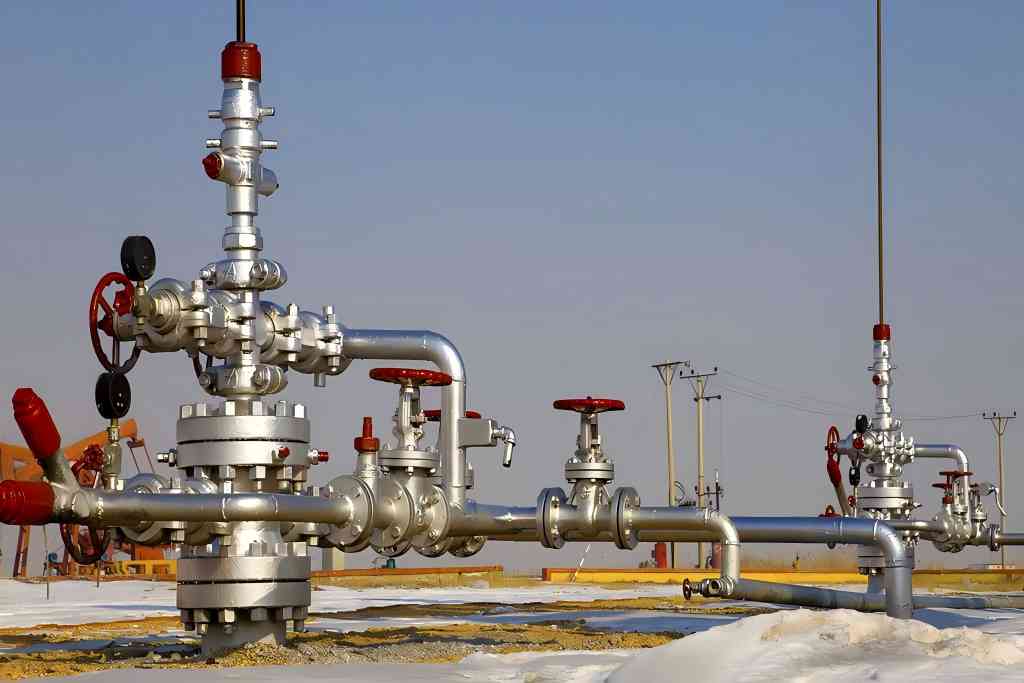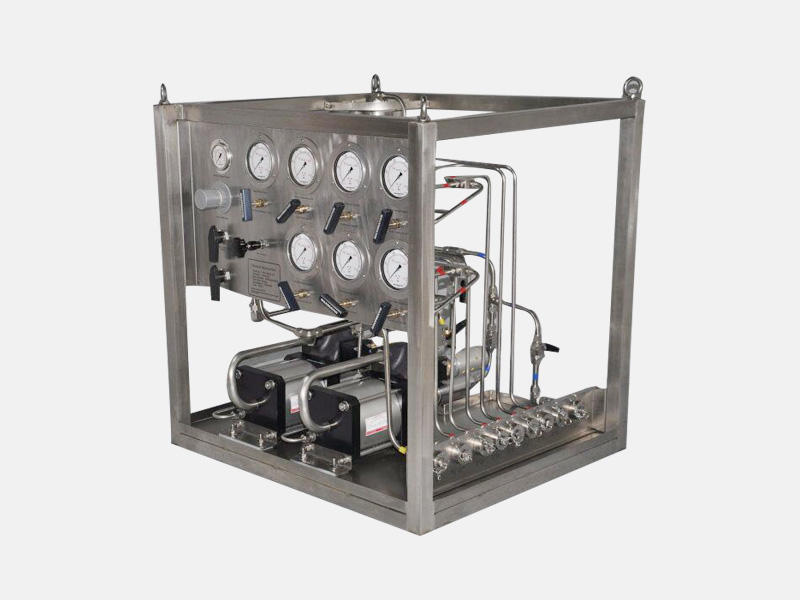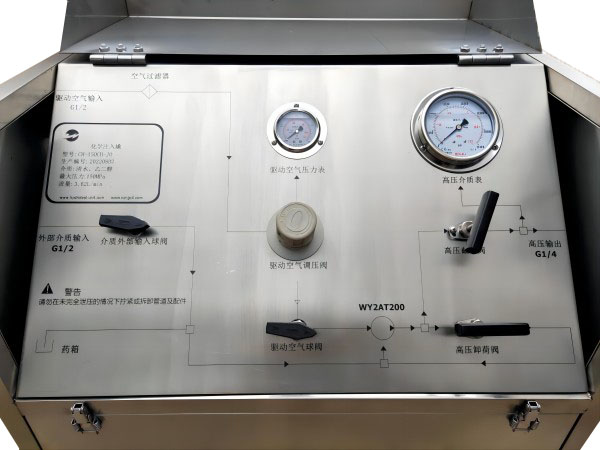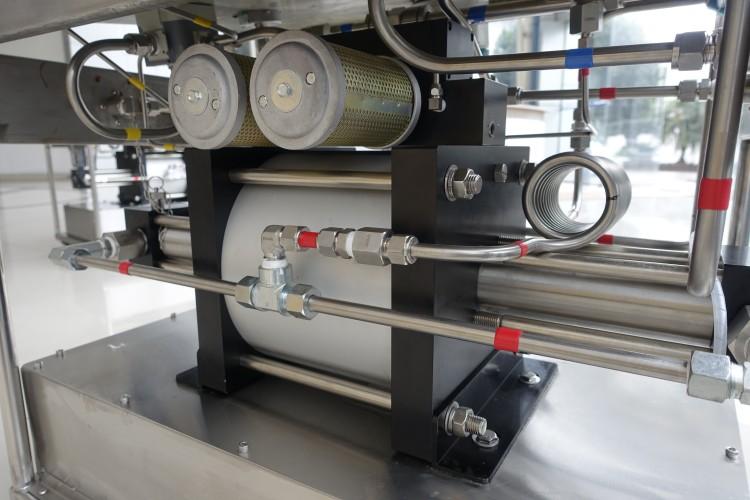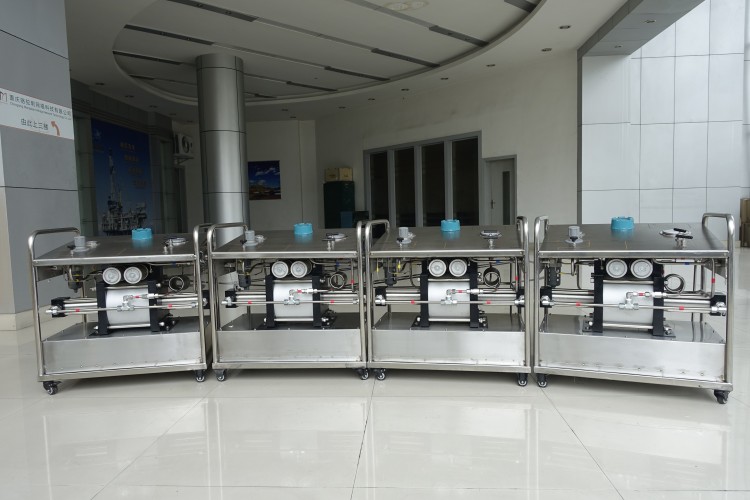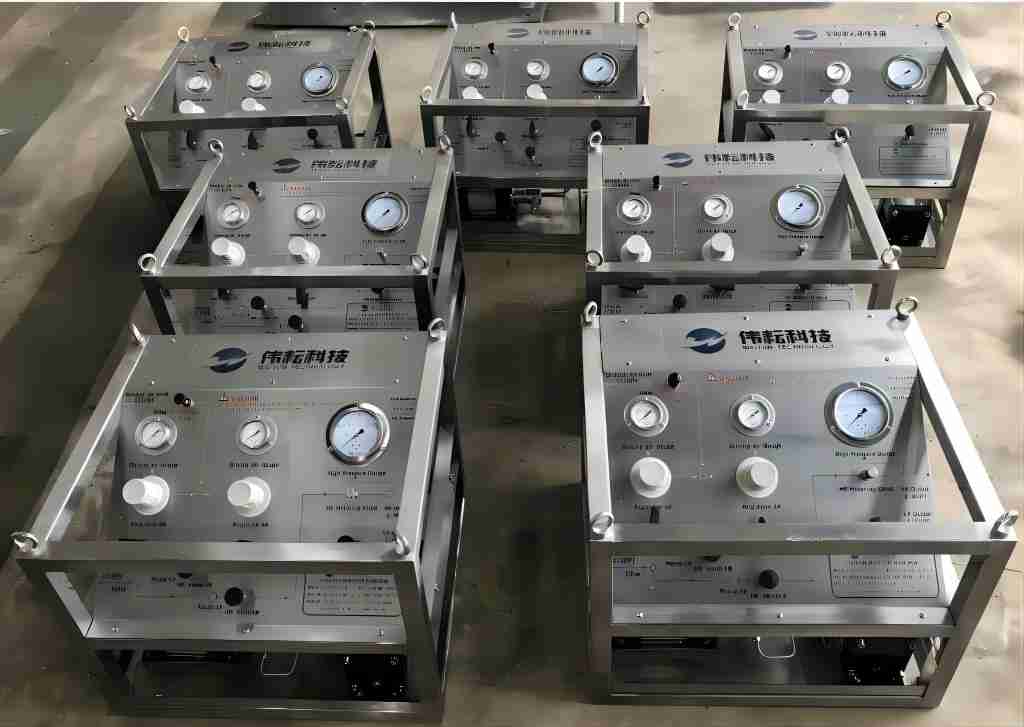Enhancing Oil Recovery with Chemical Injection Pumps
Chemical injection pumps are essential equipment in various industrial processes, particularly in oil fields, where they play a crucial role in injecting precise amounts of chemical agents into a system. These pumps are designed to deliver chemicals such as methanol, ethylene glycol, corrosion inhibitors, and other fluids to ensure the optimal operation of oil wells and other industrial processes. The choice of the right chemical injection pump is critical, as it directly impacts the efficiency, safety, and effectiveness of the operation. Depending on the application, chemical injection pump manufacturers offer various types of pumps powered by different energy sources, each with unique advantages and limitations. This article explores the different types of chemical injection pumps based on their power sources and delves into their specific applications, especially in the oil extraction industry.
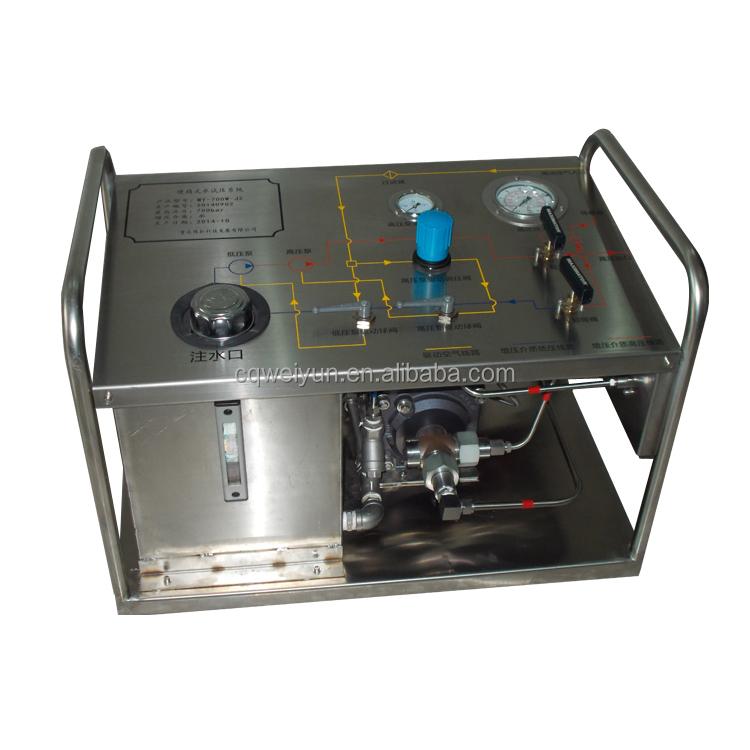
Types of Chemical Injection Pumps Based on Power Source
Chemical injection pump manufacturers design pumps that operate on different power sources to suit various industrial needs. Understanding these power classifications helps in selecting the right pump for specific applications.
| Type of Chemical Injection Pump | Power Source | Description | Advantages | Limitations |
| Electric Chemical Injection Pumps | Electric Motor | Uses an electric motor to drive mechanical components, delivering chemical agents accurately. Often used in environments requiring stable and continuous power, providing consistent flow rates and pressure. | High precision in flow control, ensuring accurate chemical dosage. | Dependent on a continuous power supply. |
| Efficiency reduces operational complexity and time costs. | May not be suitable for environments without stable electricity. | |||
| Stable operation unaffected by external factors. | / | |||
| Multi-channel operation capabilities for handling multiple fluids. | / | |||
| Remote control and monitoring capabilities. | / | |||
| Pneumatic Chemical Injection Pumps | Compressed Air | Operates using compressed air to drive a piston, enabling the pump to draw in and discharge chemicals. Commonly used in hazardous environments where electricity is unavailable or safety is a concern. | Safe for use in explosive environments due to spark-free operation. | Efficiency depends on stable air pressure and consistent air supply. |
| Ideal for remote locations without reliable power. | Lower flow rates and pressure compared to electric pumps. | |||
| Simple design leads to lower maintenance costs. | Noisy and prone to vibration. | |||
| Capable of operating in harsh environments with high temperatures and pressures. | Diaphragm requires regular replacement. | |||
| Hydraulic Chemical Injection Pumps | Liquid Pressure (Hydraulic System) | Uses liquid pressure to drive the pump, delivering high-pressure and stable flow rates. Suitable for high-pressure chemical injection in oil and gas applications. | High-pressure capabilities make them ideal for deep wells and high-pressure environments. | Requires a reliable hydraulic system. |
| Durable and reliable, maintaining consistent flow rates under challenging conditions. | May be more complex to operate and maintain compared to simpler pump types. | |||
| Water-Powered Chemical Injection Pumps | Flowing Water | Harnesses kinetic energy from flowing water to drive the pump. Commonly used in agricultural settings for injecting pesticides or fertilizers into irrigation systems. | Environmentally friendly and cost-effective by using natural water flow. | Limited use in the oil and gas industry due to specific power and environmental requirements. |
| Reduces energy consumption and operational costs. | ||||
| DC Motor-Driven Chemical Injection Pumps | DC Motor (Brushless DC Motors) | Driven by DC motors, offering high power efficiency and advanced functionality. Suitable for applications requiring precise chemical dosing and remote monitoring. | High efficiency and precision in chemical dosing. | Limited by the availability of a DC power source. |
| Advanced features like remote monitoring and control. | May require more advanced control systems and monitoring equipment. | |||
| Ideal for energy-efficient operations. | / |
Comparison Between Electric and Pneumatic Chemical Injection Pumps
When selecting a chemical injection pump, it is essential to consider the specific needs of the application, including the required accuracy, stability, and environmental conditions. Two common types of chemical injection pumps—electric and pneumatic—offer distinct advantages and disadvantages that must be weighed against the operational requirements.
| Criteria | Electric Chemical Injection Pumps | Pneumatic Chemical Injection Pumps |
| Power Source | Electric motor | Compressed air |
| Flow Control | High precision, allowing for accurate chemical dosages. | Lower precision compared to electric pumps, influenced by air pressure stability. |
| Efficiency | More efficient, reducing operational complexity and time costs. | Less efficient, especially if air supply is inconsistent. |
| Versatility | Supports multi-channel operations and remote control/monitoring, making it suitable for complex industrial processes. | Simpler design and operation but less adaptable for complex or precise processes. |
| Safety | Requires proper safety measures in hazardous environments due to the presence of electrical components. | Spark-free operation makes it safer for use in explosive environments. |
| Maintenance | Generally low maintenance but requires stable electricity. | Simple design leads to lower maintenance costs but requires regular diaphragm replacement. |
| Application Environment | Suitable for environments with a stable power supply, especially where precision and reliability are crucial. | Ideal for remote locations or hazardous environments without reliable power. |
| Noise and Vibration | Quieter operation with less vibration. | Noisier and more prone to vibration, which may be a concern in certain applications. |
| Pressure and Flow Rate | Provides higher flow rates and pressures, making it suitable for larger scale industrial processes. | Generally offers lower flow rates and pressures compared to electric pumps. |
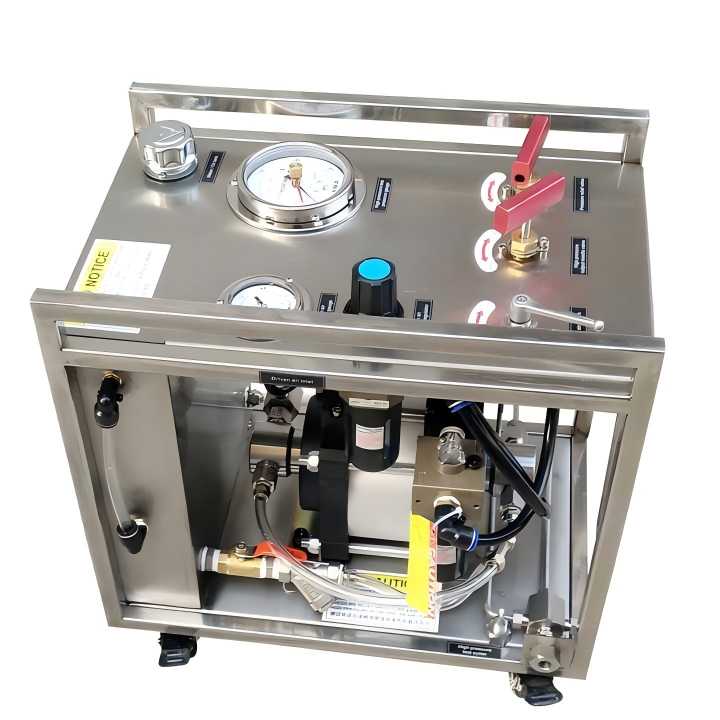
Application of Chemical Injection Pumps in Oil Extraction
Chemical injection pumps play a vital role in oil extraction processes, particularly in preventing hydration in oil wells and enhancing oil recovery rates through chemical methods.
1. Preventing Hydration in Oil Wells
One of the critical applications of chemical injection pumps in oil extraction is the prevention of oil well hydration. Hydration occurs when water penetrates the oil layer during extraction, leading to a decrease in oil production. Chemical injection pumps are used to inject chemicals like methanol or ethylene glycol into the oil well, which prevents the formation of ice and reduces the occurrence of hydration. These chemicals work by lowering the freezing point of water, preventing the formation of ice in the wellbore, and ensuring the continuous flow of oil. By precisely controlling the injection pressure and flow rate, chemical injection pumps ensure that the chemicals are evenly distributed throughout the well, effectively preventing water intrusion and extending the production life of the well.
2. Chemical Injection in Enhanced Oil Recovery (EOR)
In enhanced oil recovery (EOR) processes, chemical injection pumps are used to inject chemicals into high-pressure reactors, improving the efficiency of oil extraction. Chemical EOR involves injecting chemicals such as polymers, surfactants, and water-soluble gases into the oil reservoir to change the interaction between oil and rock, reducing the viscosity of the oil and increasing its mobility. By lowering the interfacial tension between the oil and the reservoir rock, these chemicals help release trapped oil, allowing it to flow more easily to the production wells.
Chemical injection pumps play a crucial role in this process by ensuring the accurate and efficient delivery of the chemicals into the reservoir. The pumps must be capable of generating the high pressures required to inject the chemicals deep into the reservoir, as well as maintaining a consistent flow rate to ensure uniform distribution. The precision and reliability of these pumps are essential for the success of the EOR process, as any variations in chemical dosage or injection pressure can significantly impact the recovery rate and overall efficiency of the operation.
Advantages of Chemical-Enhanced Oil Recovery Techniques Over Traditional Methods
Chemical EOR techniques offer several advantages over traditional oil extraction methods, making them a valuable tool for oil and gas companies looking to maximize their production and profitability.
- Increased Recovery Rates: One of the primary benefits of chemical EOR is its ability to increase oil recovery rates significantly. By altering the properties of the oil and reservoir, chemical agents make it easier to extract oil that would otherwise be difficult or impossible to recover using traditional methods. This increased recovery translates into higher production volumes and greater profitability for oil and gas companies.
- Wide Applicability: Chemical EOR techniques are versatile and can be applied to a wide range of oil reservoirs, including those that are challenging to exploit using conventional methods. This adaptability makes chemical EOR a valuable option for oil and gas companies looking to enhance their production in a variety of settings.
- Operational Simplicity: Compared to some traditional extraction methods, chemical EOR techniques are relatively simple to implement and operate. Chemical injection pumps play a key role in this simplicity, as they allow for precise and controlled delivery of chemicals into the reservoir, reducing the complexity of the overall process.
- Environmental Considerations: While chemical EOR techniques offer significant benefits, they also raise environmental concerns. The chemicals used in these processes can have negative impacts on the environment if not managed properly. Therefore, it is essential for oil and gas companies to implement strategies to mitigate these impacts, such as using environmentally friendly chemicals and ensuring proper disposal of waste materials.
- Economic Benefits: Despite the initial investment required to implement chemical EOR techniques, the long-term economic benefits can be substantial. By increasing oil recovery rates and extending the productive life of oil wells, these techniques can lead to higher revenue and profitability for oil and gas companies. Additionally, advancements in chemical injection pump technology continue to improve the efficiency and cost-effectiveness of these processes.
- Technological Advancements: The field of chemical EOR is constantly evolving, with new technologies and techniques being developed to improve the effectiveness and efficiency of these processes. Chemical injection pump manufacturers are at the forefront of these advancements, continually innovating to meet the needs of the oil and gas industry.
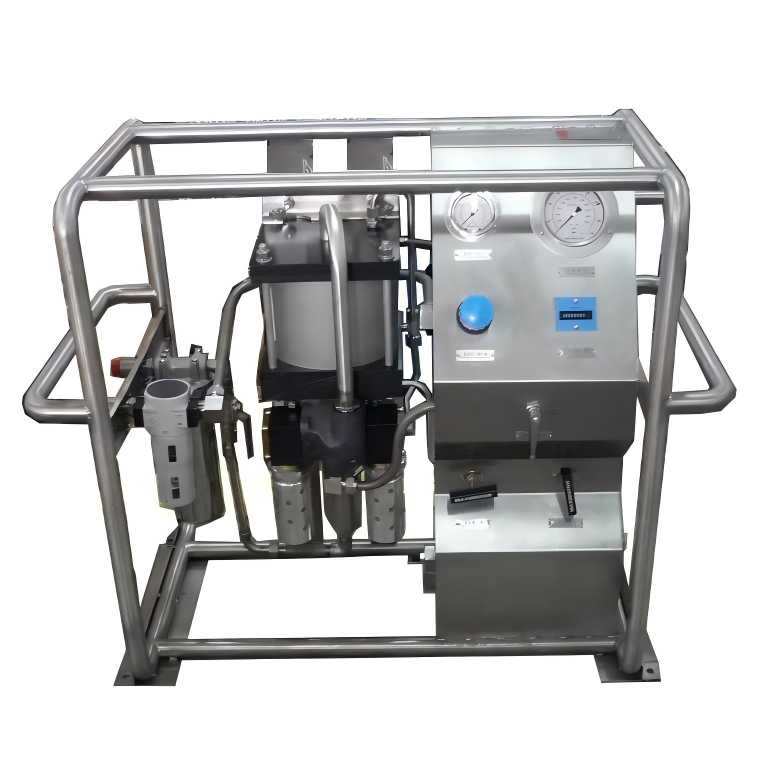
In conclusion, the selection of the appropriate chemical injection pump is crucial for ensuring the efficient and safe operation of industrial processes, particularly in the oil extraction industry. By understanding the different power classifications of chemical injection pumps and their specific applications, operators can make informed decisions that optimize performance and reduce costs. Whether using electric, pneumatic, hydraulic, water-powered, or DC motor-driven pumps, each type offers unique advantages and limitations that must be carefully considered. As technology continues to advance, the role of chemical injection pumps in enhancing oil recovery and improving industrial processes will only become more significant. Chemical injection pump manufacturers will continue to innovate, offering new solutions that meet the evolving needs of the industry.

